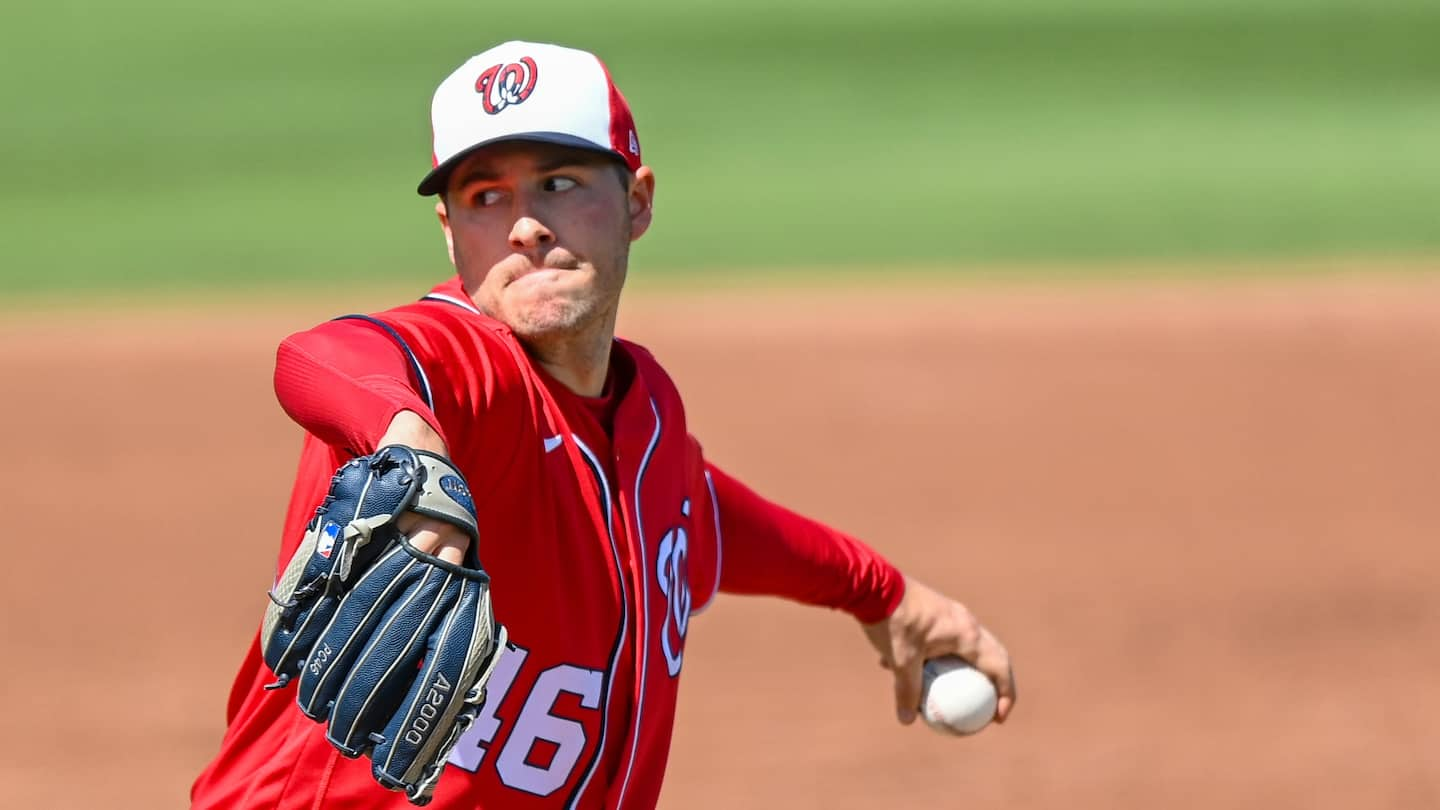Patrick Corbin is again saying he wants to throw more change-ups. Here’s why.

And on March 6, in his first appearance since a down 2020, he echoed those thoughts after two exhibition innings against the Miami Marlins: “It’ll be something I’ll continue to work with, and hopefully it’s a pitch that I do throw more often this season.”
In 2018, his change-up usage was 1.1 percent, slimming his mix to a four-seam fastball, a sinker, an elite slider and rarely thrown curve. In 2019, he upped that usage to 5.7 percent, making good on his preseason promise. But the usage plateaued last summer — inching to 5.8 — while he allowed an MLB-worst 85 hits across 11 starts.
That’s not to say his change-up usage was the reason. The results, though, could spur another noticeable spike. The whiff rate for his slider took a large dip from 51.4 percent in 2019 to 38.1 in 2020. To rectify that, and restore the swing-and-miss potential of his best pitch, Corbin is tinkering in two ways: One is testing a cutter that he’s also called a “harder slider.” The other is mixing more change-ups into each start. And the biggest tell that the latter may stick — aside from limited data — is that it’s not just Corbin discussing it.
First it was catcher Alex Avila in February: “Having something off-speed going the opposite direction to a righty could take some pressure off that slider a little bit when guys are making adjustments to it, either trying to lay off it or they’re looking for it to hit.”
Then it was new pitching coach Jim Hickey, a noted fan of change-ups: “If I walked into camp unaware of Patrick Corbin and his repertoire, and all those types of things, I would have just assumed that the change-up was a normal part of it. And it’s very, very good. It’s going to be a very effective pitch and it’s something that he could use a lot more.”
Then Manager Dave Martinez chimed in after Corbin’s outing on March 6: “If he can develop that change-up along with that good slider he has, it’s just another pitch that hitters got to worry about.”
Martinez’s point is key to this line of thinking. At 31, and after a handful of successful years, Corbin isn’t going to reinvent himself. It is a positive sign that opponents had a .362 batting average on balls in play against him in 2020. The higher that is above .300, the more bad luck and subpar defense likely played a factor in results. There’s not yet reason to overhaul the fastball-slider combination that led to a six-year, $140 million contract from the Nationals two winters ago. There may never be.
But Corbin’s overall line in 2020 — a lot of hits, a lot fewer strikeouts — did call for subtle changes, at the very least. Now, in the midst of making them, it’s clear he wants to make his slider just a bit less predictable.
“Everyone knows I’m throwing a slider,” Corbin said this month. “To have something else available to maybe keep them off that pitch, or maybe something to show them less, is kind of what we’re thinking there.”
Corbin’s slider moves left to right. That means, on a basic level, that it goes inside to righties and away from lefties. But when he pares down his arsenal to a slider and fastball, he doesn’t have an off-speed pitch to use on the left side of the plate (away from righties and in on lefties). And this is how hitters, especially righties, start to sit on his slider and have an easier time laying off.
The change-up, then, could make it harder for right-handed batters to assume the slider is coming. His change-up works best when thrown arm side (on the outer half of the plate to righties) to complement his slider going in the other direction. Corbin proved this in his short outing against the Marlins on March 6.
With two outs in the first, he got ahead 0-1 when Brian Anderson fouled off an inside four-seam fastball. The next pitch, a low-and-in slider, fell away from the zone as Anderson swung through it. This put Corbin in full control of the at-bat. The count moved to 1-2 after he sprayed a four-seamer near Anderson’s head. It was the perfect time for another low slider to finish Anderson off. Then catcher Yan Gomes called for an outside change-up and Corbin nodded in agreement.
It floated at 79 mph and well below Anderson’s flailing bat for strike three. It was one out in a meaningless exhibition, still a month before Corbin’s first start of the regular season. But it was marginal progress, and that always counts.
Baseball fans: What are you most excited to do again once ballparks reopen? The Post wants to know.






